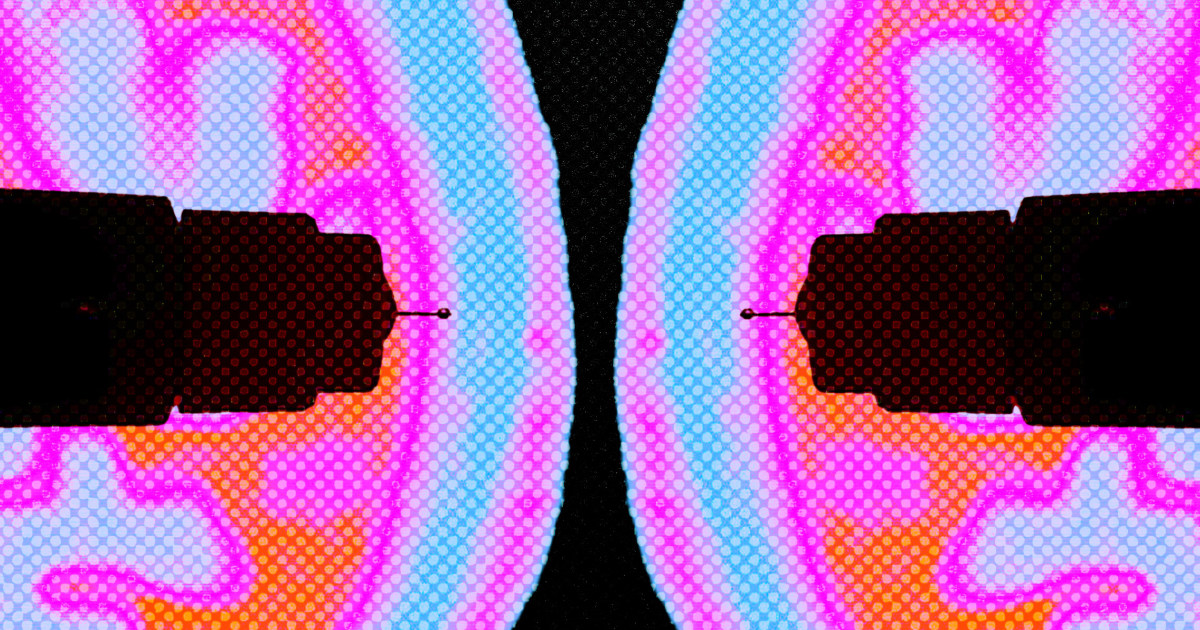
A weight loss drug similar to Ozempic appeared to slow cognitive decline in patients with mild Alzheimer’s disease, new research presented Tuesday at the Alzheimer’s Association International Conference in Philadelphia finds.
The findings, which have not yet been published in a peer-reviewed journal, add to the growing evidence that GLP-1 agonists — a class of medications that includes the popular diabetes and weight loss drugs Ozempic and Wegovy, from Novo Nordisk, and Mounjaro and Zepbound, from Eli Lilly — may also protect the brain.
“What we’ve shown is that these GLP-1s have great potential to be a treatment for Alzheimer’s disease,” said Dr. Paul Edison, a professor of neuroscience at Imperial College London who presented the findings Tuesday. “As a class of drugs, this holds great promise.”
Early evidence has hinted at GLP-1 drugs’ brain-boosting potential. Semaglutide, the active ingredient in Ozempic and Wegovy, has been shown in studies to cut the risk of dementia in patients with Type 2 diabetes. Type 2 diabetes is a known risk factor for the disease.
Novo Nordisk is running two phase 3 clinical trials that will compare semaglutide to a placebo in more than 3,000 patients with mild cognitive impairment or early-stage Alzheimer’s disease. The trial results are expected to be released sometime in 2025. In a statement, a Novo Nordisk spokesperson said there is “an urgent need for treatments that can slow the progression of Alzheimer’s disease.”
The new research presented by Edison looked at liraglutide, the active ingredient used in two of Novo Nordisk’s older GLP-1 drugs, Saxenda, a weight loss drug, and Victoza, a diabetes drug. The midstage clinical trial included about 200 people in the United Kingdom who got daily injections of either liraglutide or a placebo.
After one year, cognitive decline in the patients who got liraglutide had slowed by as much as 18% compared to those who didn’t get the drug, based on the Alzheimer’s Disease Assessment Scale, which tracks the progression of the disease by assessing memory, language, skills, understanding and reasoning abilities.
The drug was also shown to reduce shrinkage in parts of the brain responsible for memory, learning and decision-making by nearly 50%. Shrinkage of the brain, also known as brain atrophy, is often associated with the severity of cognitive decline in people with dementia and Alzheimer’s.
“I think there’s some hope for these drugs,” said Dr. Ronald Petersen, a neurologist at the Mayo Clinic in Rochester, Minnesota, who is not involved with the research. “Their primary use is diabetes and weight loss, but you’ve probably also seen that they may be useful for sleep apnea and heart disease. So all of these effects cumulatively may be very beneficial to the brain.”
The next wave of Alzheimer’s treatments
Nearly 7 million people in the U.S. have Alzheimer’s disease, according to the Alzheimer’s Association. By 2050, the number is projected to almost double to 13 million.
The disease has no known cure.
Within the past two years, the Food and Drug Administration has approved two drugs — Biogen’s Leqembi and Lilly’s Kisunla — that marginally slow the progression of Alzheimer’s by targeting the disease’s hallmark amyloid plaques in the brain. They’re the only drugs on the market available to treat the disease, but they’re pricey and can come with serious side effects, including brain swelling and brain bleeding.
Dr. Maria Carrillo, the chief science officer at the Alzheimer’s Association, said she expects that GLP-1 drugs may be the next advancement in the treatment of the disease, most likely used in combination with the amyloid-fighting drugs.
“I think the first thing out of the gate will be the GLP-1s,” Carrillo said.
If late-stage trials go well, FDA approval could happen as early as next year, she said. But combination treatment of amyloid drugs and GLP-1s is most likely already happening in the real world, Carrillo added, noting that many people with Alzheimer’s disease also have diabetes or obesity and may already be taking a GLP-1 medication.
“Those combinations are already happening,” she said. “They’re just not FDA-approved combinations.”
How might GLP-1s protect the brain?
Dr. Alberto Espay, a neurologist at the University of Cincinnati College of Medicine, said the key questions that remain are how do GLP-1s help protect the brain and by how much.
The fact that they appear to help makes sense: Alzheimer’s, he said, is thought to be a “syndrome of many diseases caused by different biological, toxic or infectious exposures.”
Petersen, of the Mayo Clinic, agreed.
“I think the data are accumulating across the board for a variety of different disorders and mechanisms,” he said. “Any one of these factors, diabetes, obesity, all of these can have deleterious effects on cognitive functions. If you treat those underlying conditions, you make it a beneficial positive effect of cognitive function.”
The existing Alzheimer’s drugs, Leqembi and Kisunla, target only one component of the disease: amyloid plaque in the brain.
The GLP-1 drugs, Petersen said, could work in “nonspecific” ways.
“I don’t think that this class of drugs necessarily will have specific actions on Alzheimer’s disease if you define Alzheimer’s disease by the presence of plaques and tangles of amyloid and tau,” he said. “On the other hand, if these drugs have anti-inflammatory kinds of actions or other cerebrovascular actions, that could be very important.”
Edison said that the liraglutide study found that people who got the drug had reductions in inflammation, insulin resistance and the formation of tau, a protein in the brain that is thought to contribute to Alzheimer’s. They also had improvements in overall brain function.
“If you want to have very effective treatment, what you need is not only targeting amyloid. You have to target other pathological forces, as well,” he said.
Espay said of the liraglutide results: “This looks promising. If this is replicated in a phase 3 trial, it could become the first truly disease-modifying treatment in Alzheimer’s disease.”






